Best tubeless sealant 2025 - tyre sealant for MTB, gravel and road

Tubeless sealant is a vital component of any tubeless tyre setup. Not only does it help to create an airtight seal to stop your tyre from deflating over time, but the best tyre sealant will also seal all but the worst puncture holes you might pick up on the trail, ensuring you keep rolling for longer.
The best tubeless tyre sealants are now so effective at plugging holes in your off-road tyre that the majority of the time, you won't even realise you suffered a puncture. The pros of ditching tubes and running a tubeless tyre setup are not limited to clotting and bunging holes in your rubber. They allow you to run lower tyre pressures to increase traction and grip, allowing you to ride trails faster with enhanced control with none of the risks of pinch flatting as you would rolling with a tube.
The sealant is just one component in the tubeless system. For a hassle-free ride, the complete system requires good tubeless rim tape over the spoke holes, a tubeless valve in each wheel rim and, of course, a tubeless-ready tyre to seat on the rim. Other items worth considering for an easier setup include a sealant cleaner to remove any sealant residue from your tyre and wheel rim if you have run a previous tubeless system. You might need a tubeless tyre inflator to help get the tyre seated onto the rim with a reassuring ping - although in some cases a regular track pump does the trick, too.
With a tonne of sealants on the market picking the right one for you can be difficult. This buyer's guide will showcase the best tyre sealants we have tested. The top performers in our tests are listed below with a clickable link which will jump straight to the product introduction. Under each product, you'll find a handy link to our full in-depth review.
Further down, we also answer some of the most frequently asked questions about mountain bike and gravel tyre sealants.
- Stan's No Tubes Race Tubeless Sealant
- Halo Fibre Tech Tubeless Sealant
- Muc-off Tubeless Sealant
- Joe's No Flats Elite Racer Sealant
- Pirelli Scorpion Sealant
- Peaty's Holeshot Bio Fibre Tubeless Sealant
- Hutchinson ProtectAir Max Sealant
- Vittoria Universal tubeless Sealant
- Silca Ultimate Tubeless Sealant
- Orange Seal Regular Sealant
- WTB TCS Tubeless Tyre Sealant
Stan’s No Tubes Race Tubeless Sealant 946ml - £40
Stans is arguably the most well-known bicycle tubeless brand and has been supplying and evolving its sealant formula for years. The 'Race sealant' we tested is claimed to plug bigger holes faster with a formula that boasts twice the amount of particles with larger crystals compared to its regular sealant recipe.
In our testing, we found that this sealant is very effective in plugging holes, but the downside to this Race compound is that it needs to be inspected every few weeks - and we found that it dries out a little quicker than other sealants - but the 946ml bottle (the only size available) is going to last you plenty of top-ups. So if you swap your tyres and sealant often, then this is a great sealant option.
- Read the full review of Stan's NoTubes Race Sealant for more details.
Halo Fibre-Tech Tubeless Sealant 250ml - £10
The Halo Fibre Tech Tubeless Sealant is a synthetic solution with a thick milkshake-type consistency. Utilising a synthetic latex base formula, this sealant is non-toxic, non-hazardous, and non-allergenic, and Halo claims it will last up to six months.
The Fibre Tech tubeless sealant can be purchased in a gigantic five-litre bottle, a volume intended for the trade within bike shop applications and in a more rider-optimised sized 250ml bottle designed to fit directly to a Presta tubeless valve without needing a syringe and hose attachment.
The thicker consistency means that the blue-coloured sealant has slow sinking particles after a vigorous shake of the little bottle. Despite three months of slipping around in the tyres, its coverage and consistency were impressively constant, with an equally superb puncture bunging performance.
- Read Matt's in-depth review of the Halo Fibre Tech Sealant.
Muc-Off Tubeless Sealant - £30 (1L)
Muc-Off 's pink logo is nearly synonymous with bicycle cleaning and lubes. Many of its products have adopted the pink colourway, and this sealant is one of them. The pink colour is not just for being cool, though, but it highlights any wounds in your tyre and uniquely shows smaller sealant bungs that might have formed unnoticed under a UV light.
The Muc-Off No Puncture Sealant is an ammonia-free solution that claims to seal punctures up to 6mm wide. The formula works for pressures ranging from 15 to 80psi, is CO2 compatible, and should last a long time within a huge temperature range.
It is available in a handy 125ml pouch that can be stashed in your ride pack, and it twists onto your Presta valve, ready to top up in those nuisance trailside catastrophes. For those full sealant refreshes, Muc-Off supplies the sealant in one-litre size bottles with a flexible hose attachment and in five-litre quantities for workshop-ready uses.
- If pink puncture protection is your style, read our Muc-Off No puncture sealant review.
Joe's No Flats Elite Racer Sealant £15 (500ml)
Joe’s No Flats offers several sealant variants, from the standard version to more road-orientated and eco-based formulas. The Elite Racer version we tested is latex-based containing particles within the solution to seal punctures of up to 6mm in size.
This sealant formula's viscosity is very thick, which makes installation, particularly pumping the sealant through the valve more difficult than the competition. This consistency is also noticeable when shaking the bottle, and the very visible particles cause the nozzle to block up quickly.
But with that low viscosity comes great performance. Joe's Elite Racers Tubeless Sealant had the best performance of any of the latex-based sealants we have put through the testing process. The price is also very competitive: £15 for a 500ml bottle is cheaper than most other sealants and the smaller 125ml bottle (£8) is designed to be carried while racing or bikepacking.
- Read the full review of the Joe's No Flats Elite Racers sealant.
Pirelli Scorpion Sealant - £33 (1L)
Pirelli is a renowned tyre manufacturer in the automotive, motorcycle, and cycle industries, and its yellow and red logo is unmissable. They've even made this Scorpion Sealant to be that bright yellow colour. Despite it looking like poison, the formula is ammonia and latex free and much like with the Muc-Off sealant further up, the bright yellow colour ensures that even the tiniest of holes will be visible against the black colour of a tyre - but it does also stain your clothes...
Pirelli makes a few versions of sealant, with the P Zero aimed towards road bikes and both Cinturato and Scorpion sealants designed for the larger gravel and mountain bike tyres. The formula itself is not different, but the naming is more about the bottle sizes: the Cinturato is available in a small 125ml quantity and the Scorpion variant is available in three sizes from their 240ml, 1-litre and workshop-sized 5-litre bottle.
Pirelli says the sealant works from 15 to 100psi pressures and in a range of temperatures from -20 to +70 degrees Celsius - and we found that it lasts very well without the need for replacement.
- Get all of the details of the Pirelli Scorpion Sealant in our in-depth review.
Peatys Holeshot Biofibre Tubeless Sealant - £20 (500ml)
This is the latest evolution of Peaty's Holeshot Tubeless sealant formula. The changes include a lowered viscosity, a new black colour for the platelet particles and the welcomed addition of cellulose and starches fibres that make the solution biodegradable.
Impressively tempting manufacturing claims that their sealant works in a wide temperature window, from as low as -20 all the way to +50 degrees Celsius. They also say it has an operational window at pressures between 15 to 120psi, covering most cycling applications. Unlike some latex-based sealants, Peaty's is compatible with Co2 inflator use.
In our testing, following extended use, the sealant could be seen around the entirety of the tyre's circumference with superb distribution and coverage. The new biodegradable particles in the sealant solution also stayed well separate, with no evidence of clumping.
- Have a gander at our full review of Peaty's Holeshot Tubeless Sealant.
Hutchinson Protect'Air Max Sealant - £25 (1L)
Hutchinson Protect'Air Max Sealant bottle offers a strong first impression when you open the bottle: there is no mistaking that distinctive smell of a latex-based sealant. Hutchinson boasts that this sealant can be used for higher-pressure road or larger volume off-road bike applications alike, sealing any punctures up to 3mm. It is available in 120ml and 1000ml bottles for riders and workshop-sized five-litre containers.
Under our standardised puncture test, this formula performed best with higher pressures but showed a quite quick drying up after four months of use. It might be a sealant better suited for commuter and road bike application that needs regular inspection and top-up.
- Like what you read? Our in-depth review of the Hutchinson Protect'Air Max Sealant has you covered.
Vittoria Universal Tyres sealant - £26 (946ml)
The Vittoria Universal tubeless sealant joins the market with another ammonia-free formula. As the name on the bottle suggests, Vittoria's aim is to provide a universal tubeless sealant that is effective across a wide pressure and volume window for puncture protection within all bike genres.
We found that it had excellent performance over a range of tyre sizes and pressures, and an ability to seal larger holes than many other sealants.
The Vittoria Universal sealant is available in sizes from 80ml (£8.99), which is enough for a single mountain bike tyre, 150ml (£11.99), 250ml (£14.99), 500ml (£19.99) and 1l (£29.99). So it is a case of getting more bang for your buck with the bigger bottle size you buy.
- You will find all the details of the Vittoria Universal Tubeless Sealant in the comprehensive review.
Silca Ultimate Tubeless Sealant - £28 (946ml)
Silca is all about making unique products, and its Ultimate Tubeless sealant is no exception. The brand has infused this sealant with carbon-fibre particles in 6mm, 9mm, and 12mm shard sizes. You might think that's very unsustainable, but the impressive thing is that these carbon fibre particles are made using recycled material from aircraft, bicycles and race cars.
This product does come with a hefty price, and its sealing performance was patchy at best, so it is really a product for those that are brand loyal and like the unique use of carbon fibre.
- Read our full review of the Silca Ultimate Tubeless Sealant.
Orange Seal Regular Sealant - £23 (473ml)
Orange Seal regular sealant has the greatest puncture protection claims within the range of sealants the company offers. With claims of being eco-friendly and suitable for all styles of riding, it is also one of the more expensive options.
This one is latex-based, features particle fibres within the solution to seal punctures and is suitable for use across all disciplines. The fluid is quite thin and the fibres within it are also small, with Orange Seal suggesting it is suitable for use in tubeless tyres, inner tubes and tubular tyres. Orange Seal Regular is claimed to last only 30-45 days and work down to -11 degrees.
- Check out the full review of Orange Seal Regular Sealant in our review
WTB TCS Tubeless Tyre Sealant - £15 (473ml)
The WTB TCS tubeless sealant is a synthetic, ammonia-free, latex-based sealant formula. After a good shake of the bottle, the solution has a free-flowing state and can easily be added to a seated tyre through the valve.
The performance of the TCS sealant is outstanding; it remained fluid for a good few months and worked well with a foam insert fitted inside the tyre. This level of performance comes packaged in four bottle sizes and is surprisingly good value compared to the competition.
- Read how the WTB TCS Tubeless Sealant scored top marks in the full review.
How long does tubeless sealant last?
Over time tubeless sealant dries up inside the tyre, losing its effectiveness. The longevity of a tubeless sealant varies depending on your chosen brand, as some simply last longer than others. However, a solid rule of thumb is that tubeless sealants should stay in liquid form for around three to six months, depending on the environment, ambient temperature, and the brand's ingredients. If you follow this guide, it will most likely be due for a refresh at the same time you would want to switch from your winter tyre setup to your summer tyres.
How often should you add sealant to tubeless tyres?
You should check your sealant every three to six months and top up when the sealant level looks low or replenish your system with more if the sealant has dried up completely.
If you store a bike for long periods of time without riding it, then like many areas of your bike, it’s worth giving it a quick once over and checking your sealant before hitting the trails.
Can you put too much sealant into a tubeless tyre?
You can't really have too much sealant, but adding more sealant than the sealant brand recommends doesn't provide any benefit to the performance of a tubeless tyre. Putting too much tyre sealant into your tyre wastes both sealant and money and will add unnecessary rational weight to your bike, which can negatively affect the handling of your bike.
It's a fine line, though, as putting in too little sealant will compromise its ability to self-seal if a foreign body penetrates the tyre. The sealant has to coat the tyre's inside with enough left to create a seep, clot and seal if a puncture occurs.
The size and volume of the tyre will denote the amount of tubeless sealant that is required, but to be safe, we recommend following the manufacturer's instructions, as the different formulas require different quantities of sealant to produce effective puncture protection.
Can I run tubeless without sealant?
It is possible to run tubeless tyres without sealant but it’s not the best idea. The liquid sealant is designed to plug small holes in the tyre casing, which helps prevent punctures. We suggest always filling (and regularly topping up) your tyres with tubeless sealant.













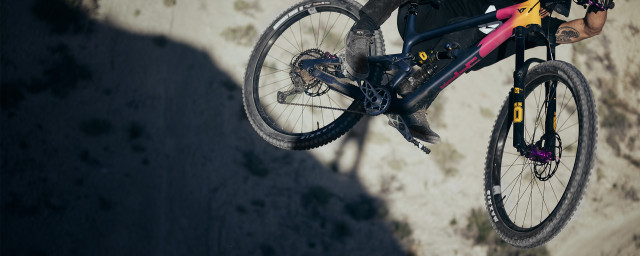
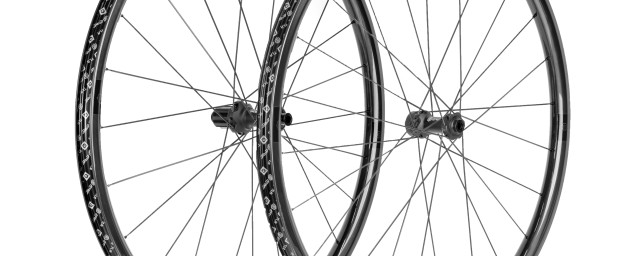

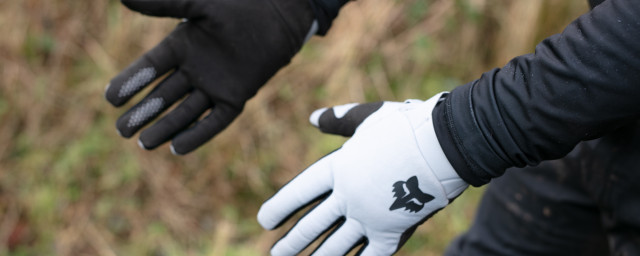
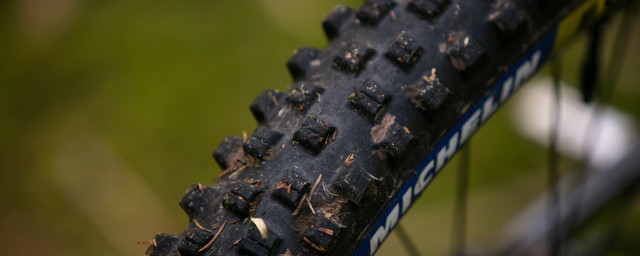
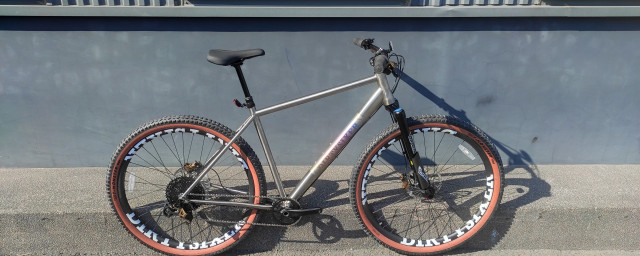
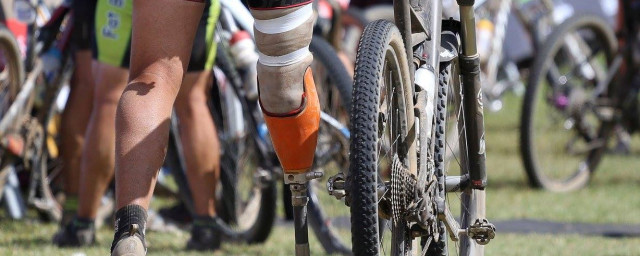
5 comments
I have had great success with Joe's Eco Sealant..... and real time testing on my own bikes... I now fit this in customer bikes if they do not specify a particular brand. I have tried others, several mentioned here and others not mentioned and some of the damage and detritus left inside the tyres was terrible.... Joe's Eco...washes out and leaves the tyres inside as clean as a new one, no latex mess..... Anyway...you pays yer money and takes your choice
I have had great success with Joe's Eco Sealant..... and real time testing on my own bikes... I now fit this in customer bikes if they do not specify a particular brand. I have tried others, several mentioned here and others not mentioned and some of the damage and detritus left inside the tyres was terrible.... Joe's Eco...washes out and leaves the tyres inside as clean as a new one, no latex mess..... Anyway...you pays yer money and takes your choice
Don't worry! We'll have a review of this one coming soon.
The reviewer has left Endurance Orange Sealant off the list. Not sure how this can a review of the best of the sealants on the market and leave this out?
Not convinced this particular buyer's guide is helpful. You state "This buyer's guide will showcase the best tyre sealants we have tested" and yet it includes things like the e*thirteen that scored 2/5 stars, and even that seems generous because it didn't work! (This Buyer's Guide says that sealant has "the power to seal punctures up to 4mm" - the full review in fact found it failed to properly seal even a 3mm puncture).
In fact less than half (5/11) of the products listed scored 4* or above - if your scoring system means anything, surely the others do not belong on a list of "best sealants"? Or is that because this is in fact simply a list of all the sealants you have ever tested (it is all the ones I could find), with no effort made to discriminate the good from the bad?